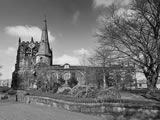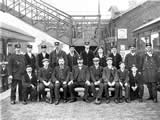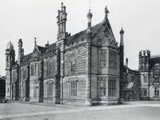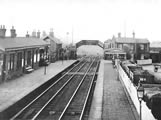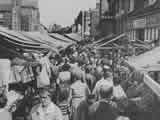From Dot Hawkes, February 2020
Ormskirk Railway Staff
When the Ormskirk-Liverpool-Preston railway line first opened in 1849, the ticket office was a small wooden hut in the same location as the present station. In 1857, there was a proposal to build a more permanent and convenient ticket office between the Moor Street and Derby Street bridges accessed via inclines from both bridges. The Railway Company refused to build the new ticket office there and it wasn’t until 1866 that the permanent station and ticket office was built.
In the 1850s there were 9 trains a day to Liverpool, seven to Preston and 9 to Southport, by the early 1900s this had increased to 41 daily trains to Liverpool, 17 to Southport and 16 to Preston.
In the late 1890s, a booking office was erected on the Preston side of the track and a few years later the platform was given a glass roof.
In 1902, a new Station Master was appointed, moving from Up Holland to Ormskirk, Robert Smith, a native of Wigan, soon started to make some necessary improvements to the Ormskirk service. Smith was responsible for the improvement of the service between Ormskirk and Rainford. His enterprise and foresight led to the Railway Company in 1906 introducing a Rail Motor Service on the Rainford line and installing the Westhead Halt and the White Moss Crossing Halt. The Aughton Park Halt soon followed.
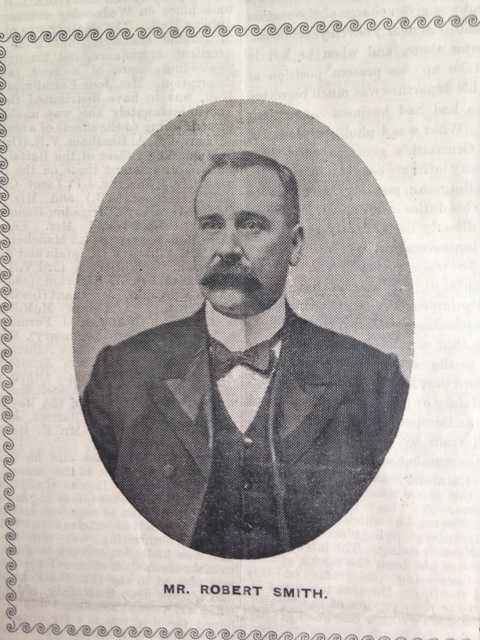
The station employed 35 staff at that time, the Chief Booking Clerk was Fred Goold, who worked at Ormskirk for many years.
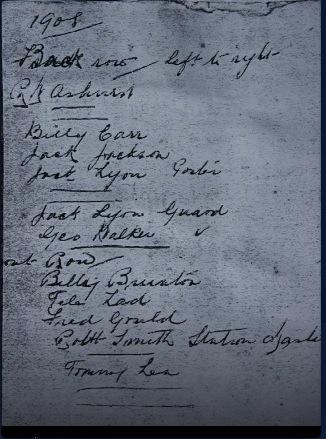

Working alongside Station Master Smith was the Goods Agent Mr Thomas Duckworth, living in Brook Lane, he had been at Ormskirk since 1875 and when Robert Smith arrived in 1902, the passenger and goods departments were divided. Duckworth was a native of Todmorden, born March 1848, starting work as a telegrapher at Tod. Station aged just 12.
The Goods department employed the Goods Agent, seven goods clerks, four porters, one foreman, six guards, one day inspector, one night inspector and two carters.
The lurry (lorry) horses were stabled in a local hotel before the station had its own stables built. The work load was substantial, potato and cabbage seasons created much traffic.
The Railway had brought new trades and new employment to the town. New travel opportunities for business and employment in Liverpool and Preston meant an increase in disposable income to many residents which meant they could use the railway to travel for holidays and days out.
The opportunity for the town’s hotels and inns to increase their accomdation was taken up and the Commercial Hotel was built in the 1860s to meet the demand. The Railway Hotel was also opened in the mid 1800s and it met the needs of passengers waiting for connections.
Businesses opened in Station Approach and Station Road that replied on the fast transport into Liverpool markets, Dickinson’s produce merchants established a successful base there and relied on the goods transport.
Royal visits to Lathom House meant that the station saw several Royal visits in the ealy years, The Duke and Duchess of Teck in 1872; The Duke of Cambridge in 1882; The Prince of Wales in 1885, (Later King Edward V11) and the Prince and Princess of Wales in 1904, later to return as King and Queen in 1913, although on that occasion it was via Motor Car!
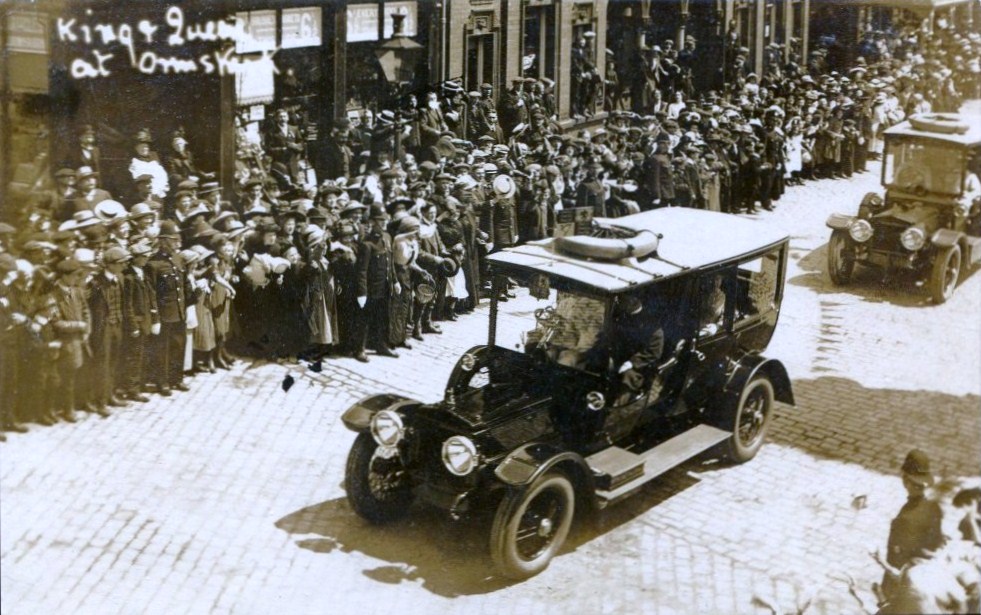
During WW1 the railways were controlled by the Government and the station at Ormskirk was a vital link for soldiers arriving for duty at Lathom Park, with tickets being issued specifically for the journey to the park via the new Skelmersdale link after it was extended.
Those early years of the history of Ormskirk Station show that the town was experiencing a time of growth and prosperity in some areas but still reliant on the agricultural industry, which could fall victim to the elements and cause sudden dips in fortune for the district.
Ormskirk & district Family History Society have a large collection of maps of the district which can show the growth of the town during the 19th century. They have a library at the Wigan Road Scout Hut which is open by request.




